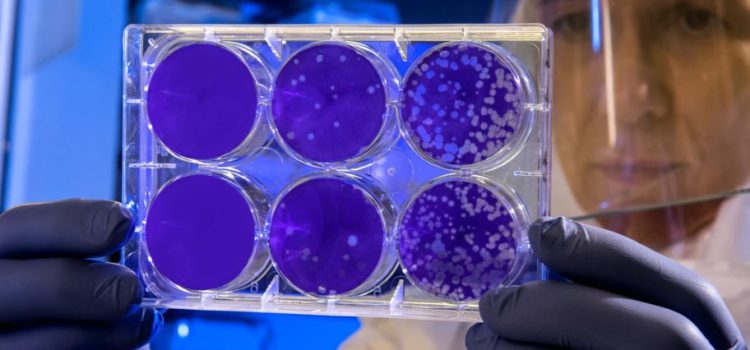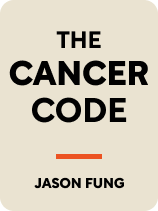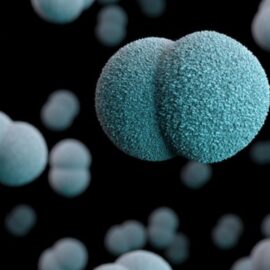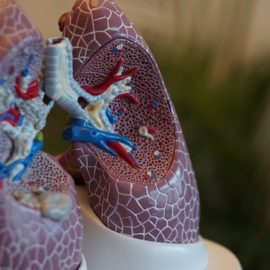

This article is an excerpt from the Shortform book guide to "The Cancer Code" by Jason Fung. Shortform has the world's best summaries and analyses of books you should be reading.
Like this article? Sign up for a free trial here.
How does cancer evolve from a single cell to a malignant tumor? Why is cancer so persistent in its efforts to survive and spread?
According to Dr. Jason Fung, cancer is ultimately a living species that operates by the same principles as all living organisms: It grows, feeds, reproduces, and fights for survival. Using this new model of cancer as a separate species, Fung describes cancer progression as a three-phase process.
Here’s how cancer evolves and becomes malignant.
Phase 1: Carcinogens Drive Cellular Evolution
There are countless known carcinogens, and those carcinogens cause damage that the body sometimes repairs incorrectly. However, Fung says that viewing cancer as an evolving species provides a more complete explanation of how carcinogens work: carcinogens create evolutionary pressure at the cellular level.
Every known carcinogen causes some kind of damage—the sun damages your skin, tobacco smoke damages your lungs, and so on. The damage isn’t serious enough to kill every cell the carcinogen reaches, but it does kill some of them, leaving the surviving cells to reproduce. The cells most likely to survive are those with the traits of cancer: rapid reproduction, the ability to ignore signals that trigger cell death, the ability to co-opt the body’s resources for their own survival, and so on.
In short, cells evolve cancerous traits because they’re very effective survival mechanisms.
Phase 2: Growth Factors Drive Cellular Reproduction
Growth factors are naturally-occurring chemicals and proteins that, as the name suggests, stimulate cell growth and cell division. Every multicellular organism needs growth factors; however, since rapid cell growth is the primary hallmark of cancer, growth factors create an ideal environment for cancerous cells to flourish. More cells also mean more mutations—more genetic diversity—which helps to prepare the cancerous “species” for the next step in its evolution.
The body’s growth factors are controlled by nutrient sensors that detect the presence or absence of various nutrients in the body. When nutrients are plentiful, the growth factors activate; when nutrients are scarce, the growth factors deactivate so the body can focus on conserving energy and culling damaged cells.
According to Fung, growth factors and nutrient sensors explain why cancer is so much more prevalent in Western countries: Our diets contain a lot of processed foods with easily-accessible nutrients, meaning those growth factors are almost always active. As a result, our bodies create cells more rapidly and destroy mutated cells more slowly than usual.
With this in mind, Fung suggests that reducing our consumption of processed foods and intermittent fasting can help to prevent cancer by reducing growth factor activity. He puts particular emphasis on controlling our insulin levels; eating a lot of simple sugars causes the body to produce a lot of insulin, which acts as a growth factor and increases the likelihood of cancer.
Phase 3: Metastasis Drives Further Evolution
As a cancerous tumor grows, it also metastasizes. This means that the tumor sheds cells into the blood, where they are carried to different parts of the body. Those cells invade tissue in other places and give rise to new, secondary tumors.
However, Fung says that the process of cancer progression is more complicated than many people think. The cells shed by the primary tumor face enormous evolutionary pressures: First of all, the immune system will find and destroy most of these cells while they’re still in the blood. Then, those few that can evade the immune system are still unlikely to survive—for example, a cancer cell that evolved in the liver wouldn’t be well suited to grow in the stomach.
Therefore, rather than simply spreading out from the primary tumor, metastasis can be a circular process. Malignant cells—further evolved from the evolutionary pressures they faced while traveling through the body—sometimes return to that first tumor and reattach to it in a process called tumor self-seeding. Now, these new cells must compete with the original cancer for resources; only the cells that reproduce most quickly and invade other tissues most effectively will survive.
Over numerous cycles, this process eventually gives rise to cells that are strong and aggressive enough to survive in other parts of the body, and those are the cells that go on to form secondary tumors. In other words, cancer doesn’t just fight against the body’s defenses; it’s in constant competition with itself to produce the hardiest and most virulent organisms possible.

———End of Preview———
Like what you just read? Read the rest of the world's best book summary and analysis of Jason Fung's "The Cancer Code" at Shortform.
Here's what you'll find in our full The Cancer Code summary:
- A guide on what cancer is and how it works
- A deep dive into the three different models of cancer
- Why there is hope for the future of cancer treatments






